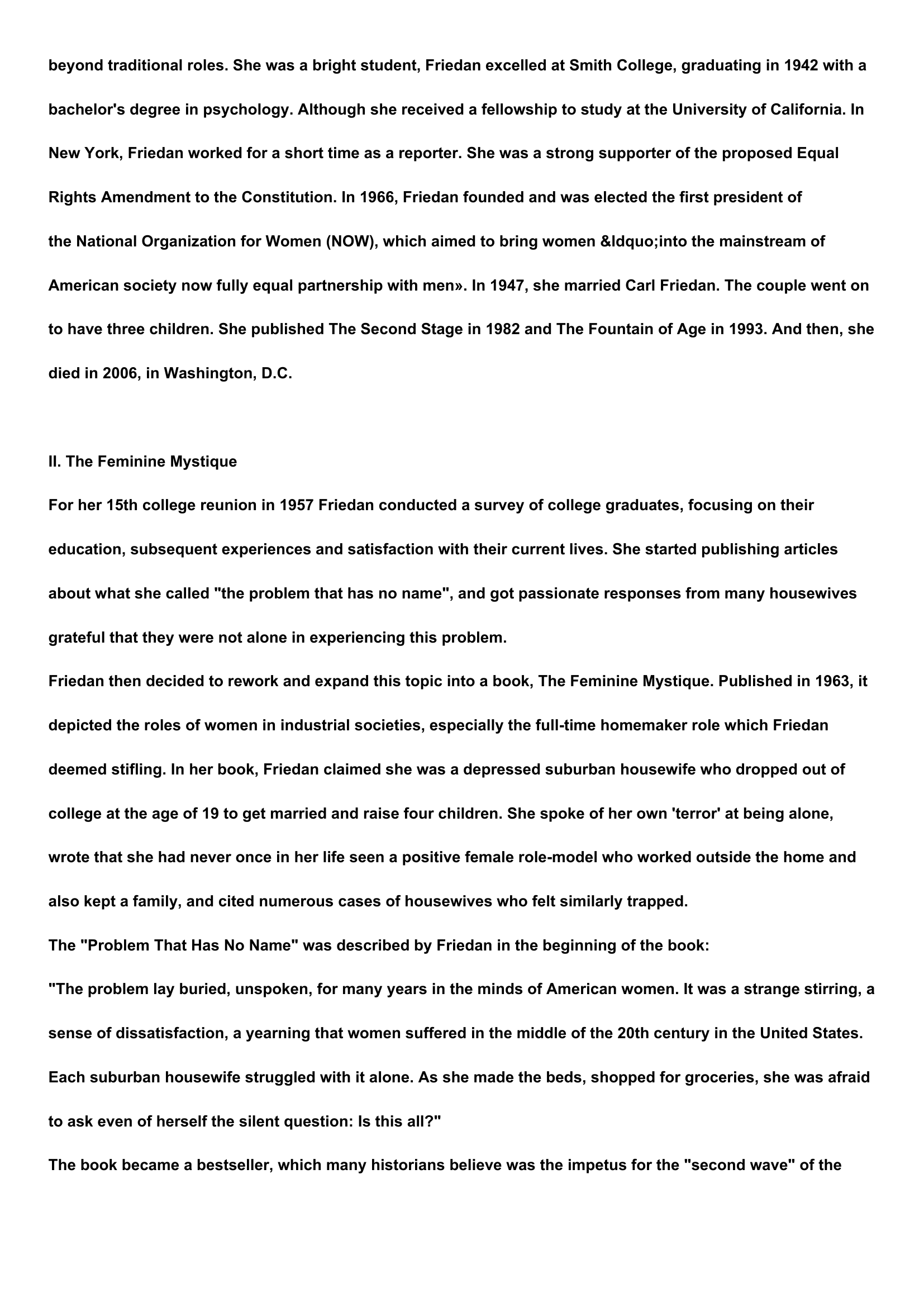The 1960’s and the American Woman: the transition from the “housewife” to the feminist
Publié le 03/05/2015

Extrait du document
«
beyond traditional roles.
She was a bright student, Friedan excelled at Smith College, graduating in 1942 with a
bachelor's degree in psychology.
Although she received a fellowship to study at the University of California.
In
New York, Friedan worked for a short time as a reporter.
She was a strong supporter of the proposed Equal
Rights Amendment to the Constitution.
In 1966, Friedan founded and was elected the first president of
the National Organization for Women (NOW), which aimed to bring women “into the mainstream of
American society now fully equal partnership with men».
In 1947, she married Carl Friedan.
The couple went on
to have three children.
She published The Second Stage in 1982 and The Fountain of Age in 1993.
And then, she
died in 2006, in Washington, D.C.
II.
The Feminine Mystique
For her 15th college reunion in 1957 Friedan conducted a survey of college graduates, focusing on their
education, subsequent experiences and satisfaction with their current lives.
She started publishing articles
about what she called "the problem that has no name", and got passionate responses from many housewives
grateful that they were not alone in experiencing this problem.
Friedan then decided to rework and expand this topic into a book, The Feminine Mystique.
Published in 1963, it
depicted the roles of women in industrial societies, especially the full-time homemaker role which Friedan
deemed stifling.
In her book, Friedan claimed she was a depressed suburban housewife who dropped out of
college at the age of 19 to get married and raise four children.
She spoke of her own 'terror' at being alone,
wrote that she had never once in her life seen a positive female role-model who worked outside the home and
also kept a family, and cited numerous cases of housewives who felt similarly trapped.
The "Problem That Has No Name" was described by Friedan in the beginning of the book:
"The problem lay buried, unspoken, for many years in the minds of American women.
It was a strange stirring, a
sense of dissatisfaction, a yearning that women suffered in the middle of the 20th century in the United States.
Each suburban housewife struggled with it alone.
As she made the beds, shopped for groceries, she was afraid
to ask even of herself the silent question: Is this all?"
The book became a bestseller, which many historians believe was the impetus for the "second wave" of the.
»
↓↓↓ APERÇU DU DOCUMENT ↓↓↓
Liens utiles
- Essay English : In Arthur Miller’s play “All my sons”, Joe Keller is a hero in his family and in the neighborhood even if he did some very awful things.
- The Rise & Fall of Ziggy Stardust and the Spiders from Mars [David Bowie] - analyse de l'oeuvre musicale.
- Beyoncé, who was born the fourth of September nineteen-eighty-one in Texas, is an American author, compositor, singer and actress.
- “What Good Is This Thing Called Intelligence and Why Bother to Measure It?” Hilliard Response
- Latinus Roman A legendary, perhaps historical, king of the Latini or Latins, an original people of central Italy, and the hero from whom that people got their name.











